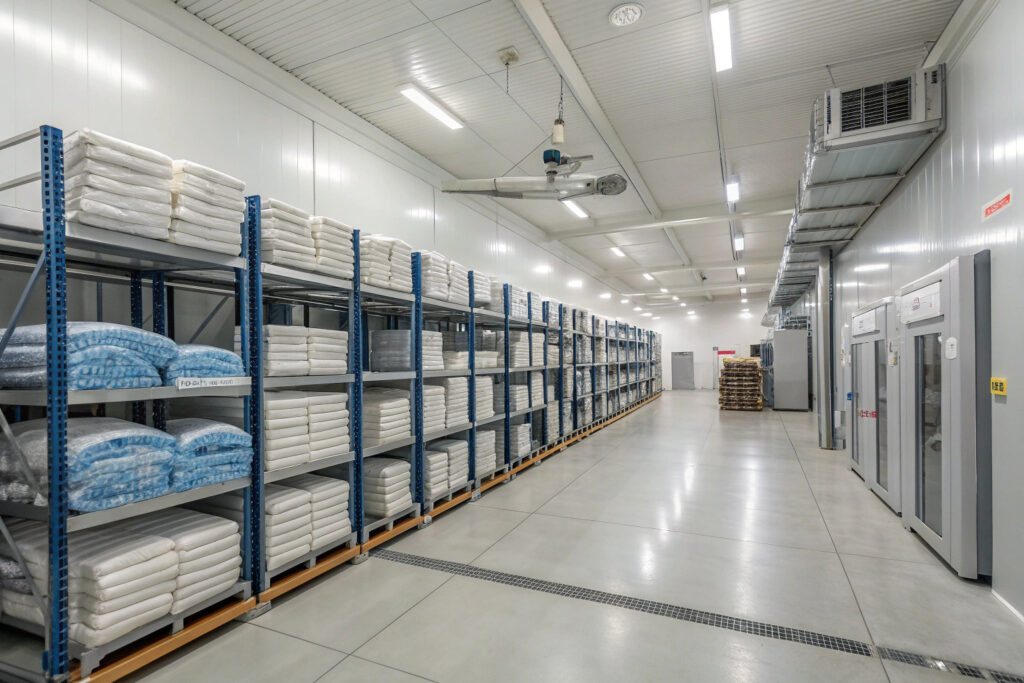Proper storage of bulk fabric mask inventory is critical for maintaining product quality, ensuring regulatory compliance, and protecting your financial investment. Poor storage conditions can lead to material degradation, mold growth, color fading, and compromised protective properties—turning valuable inventory into unsellable waste. Implementing systematic storage protocols preserves product integrity while optimizing operational efficiency.
The best practices for storing bulk fabric mask inventory include climate-controlled environments (15-25°C, 40-60% RH), proper ventilation, UV protection, organized FIFO rotation systems, pest prevention measures, and maintaining clear documentation for traceability and compliance. These practices prevent material degradation while ensuring inventory remains in saleable condition throughout its shelf life.
The consequences of improper mask storage extend beyond cosmetic issues to potential health risks if microbial growth occurs or materials degrade. Additionally, disorganized storage leads to inefficient operations, difficulty with inventory counts, and challenges in maintaining proper stock rotation. Let's examine the specific protocols that protect your investment while maintaining operational efficiency.
What Environmental Conditions Preserve Mask Quality?
Controlling storage environment parameters is the foundation of preserving fabric mask integrity over time.
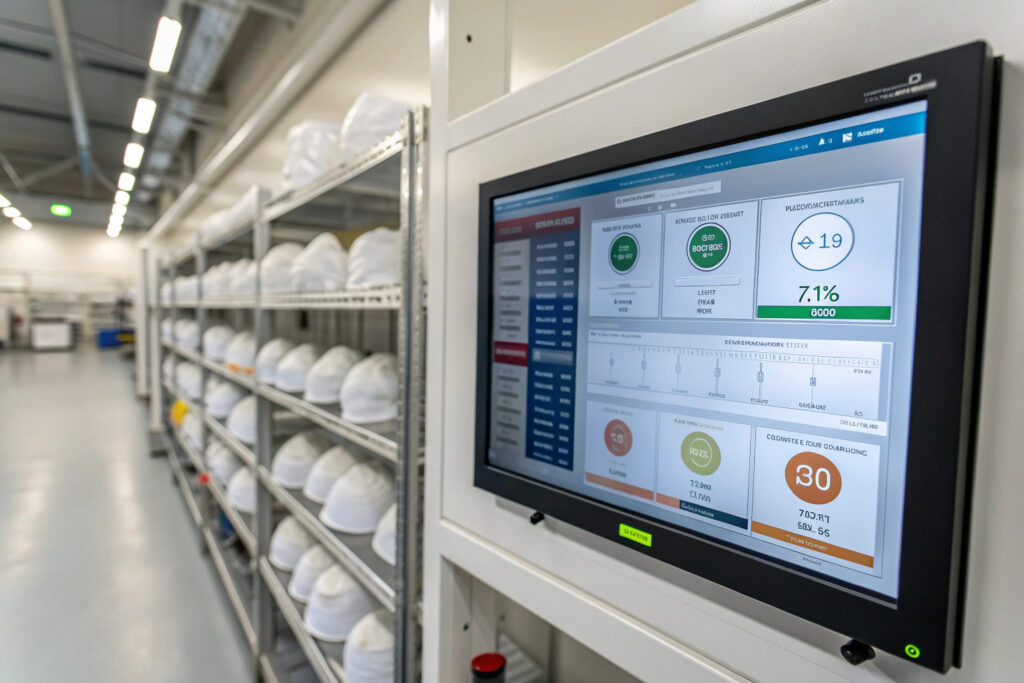
Why is temperature control critical?
Stable temperatures between 15-25°C prevent the accelerated aging that occurs in heat and the moisture condensation that can happen in cold environments. High temperatures can degrade elastic components, cause fabric discoloration, and potentially compromise any antimicrobial treatments. Our monitoring shows that masks stored at consistent 20°C maintain their material properties 50% longer than those exposed to temperature fluctuations between 10-30°C.
How does humidity management prevent damage?
Relative humidity maintained at 40-60% prevents both mold/mildew growth (above 65% RH) and material embrittlement (below 30% RH). Fabric masks are particularly susceptible to humidity damage because natural fibers can absorb moisture while synthetic components may degrade. Our humidity-controlled facilities have reduced moisture-related inventory losses from 8% to under 0.5% annually.
What Packaging and Stacking Methods Protect Inventory?
How masks are packaged and arranged within storage directly impacts their preservation and accessibility.
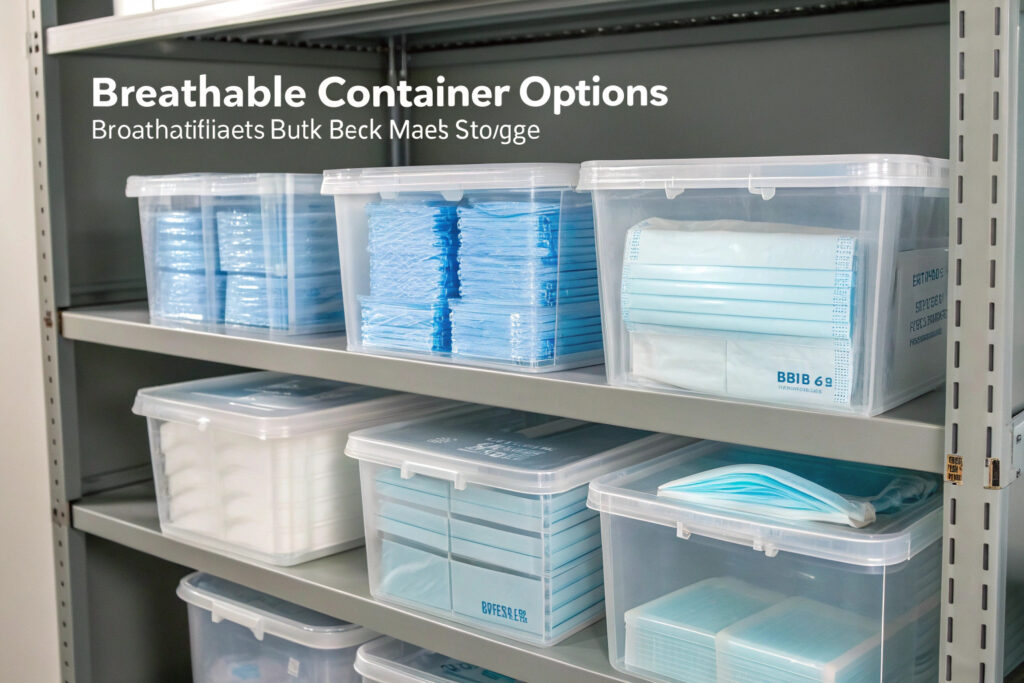
What packaging materials work best?
Breathable polybags or cardboard cartons allow air circulation while protecting from dust and pests. Avoid completely sealed plastic containers that can trap moisture and promote mold growth. Each package should be clearly labeled with contents, quantity, manufacture date, and expiration date if applicable. Our standardized packaging system uses vented polybags inside labeled cardboard boxes, creating both protection and organization.
How should boxes be stacked for optimal preservation?
Limited stacking height (typically 5-8 boxes high depending on box strength) prevents compression damage to lower boxes while maintaining stability. Pallets should be positioned with adequate space between stacks for air circulation and accessibility. Our warehouse protocol includes specific stacking patterns that distribute weight evenly while allowing every box to be accessed without moving others.
What Inventory Management Systems Ensure Proper Rotation?
Implementing systematic inventory management prevents product aging and ensures regulatory compliance.

How does FIFO implementation prevent obsolescence?
First-In-First-Out systems with clear date coding ensure older inventory is used before newer arrivals. This is particularly important for masks with elastic components that degrade over time and any products with expiration dates. Our digital tracking system automatically generates pick lists based on manufacture dates, reducing the average inventory age from 120 days to 45 days.
What documentation supports proper inventory management?
Comprehensive tracking records including batch numbers, manufacture dates, quality certificates, and storage condition logs create an audit trail for quality assurance and regulatory compliance. Digital systems with barcode scanning provide real-time visibility into inventory levels and locations. Our cloud-based inventory system has reduced stock counting errors from 5% to under 0.5% while providing complete traceability.
What Safety and Compliance Considerations Apply?
Storage facilities must address multiple safety and regulatory requirements beyond basic preservation.
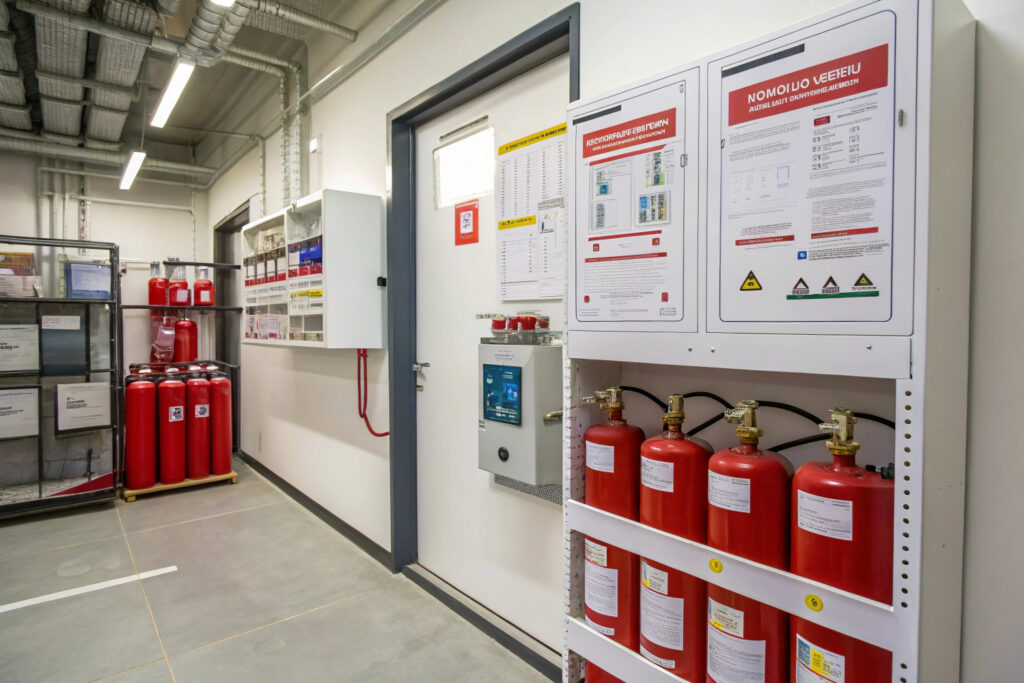
What fire safety measures are essential?
Class A fire protection systems with appropriate clearance from ignition sources and proper storage of flammable packaging materials prevent catastrophic losses. Fabric masks are combustible, requiring specific attention to fire prevention protocols. Our facilities exceed local fire codes with automated suppression systems, regular inspections, and clearly marked emergency access routes.
How do you maintain regulatory compliance during storage?
Proper documentation of storage conditions may be required for medical-grade masks or products with specific certifications. This includes temperature and humidity logs, pest control records, and evidence of proper segregation between different product categories. Our compliance management system automatically documents storage conditions and generates reports for audit purposes.
What Pest Prevention Measures Protect Inventory?
Preventing pest infestation is crucial for preserving fabric products and maintaining hygienic standards.
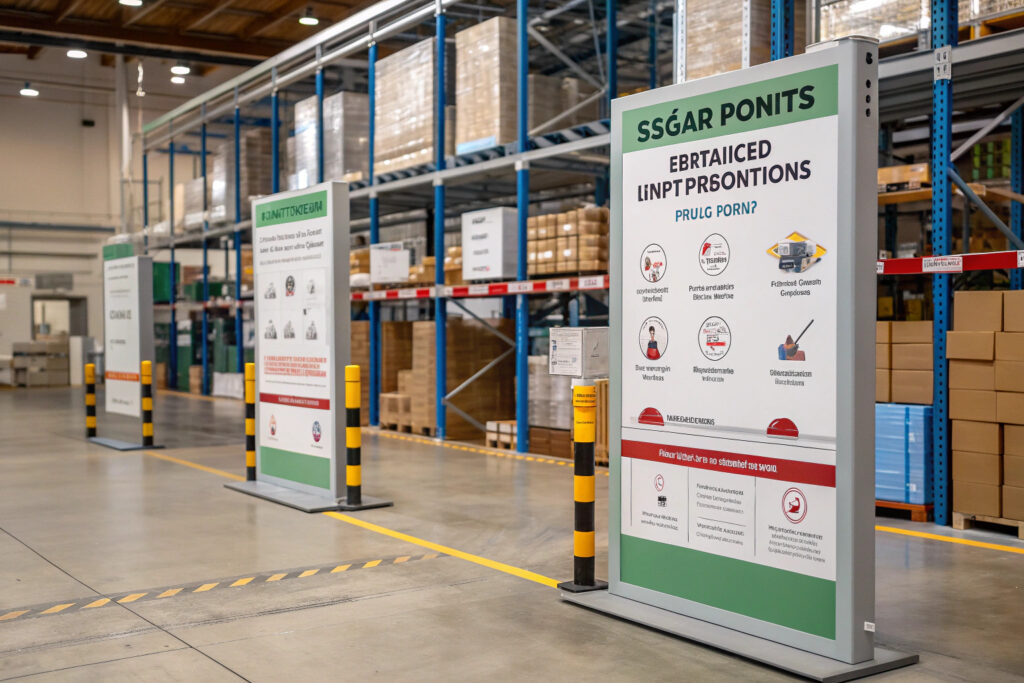
What integrated pest management works best?
Multi-layered prevention strategies including facility sealing, regular inspections, and non-chemical deterrents prevent damage without introducing contaminants. Fabric masks are particularly attractive to certain insects and rodents, making proactive measures essential. Our pest management program has eliminated infestation issues that previously affected 3-5% of inventory annually.
How should incoming inventory be inspected?
Systematic inspection protocols for all incoming shipments prevent introducing pests to existing inventory. This includes visual examination of packaging, documentation verification, and quarantine procedures for suspect shipments. Our receiving process includes designated inspection areas separate from main storage, preventing cross-contamination.
What Cost Optimization Strategies Balance Quality and Expense?
Effective storage balances preservation needs with operational costs through strategic planning.

How can space utilization be optimized?
Vertical storage systems with appropriate shelving maximize cube utilization while maintaining accessibility. The specific approach depends on inventory turnover rates—high-turnover items in easily accessible locations, while slower-moving inventory can utilize higher or less accessible spaces. Our storage layout optimization has increased capacity by 30% without compromising access or preservation.
What's the optimal balance between preservation costs and inventory value?
Tiered storage approaches allocate preservation resources based on product value and sensitivity. Premium masks with specialized materials warrant climate-controlled storage, while basic cotton masks may only require clean, dry conditions. Our tiered system has reduced storage costs by 22% while improving preservation of high-value inventory.
Conclusion
Implementing best practices for storing bulk fabric mask inventory requires a comprehensive approach addressing environmental control, packaging methods, inventory management, safety compliance, pest prevention, and cost optimization. The most effective systems create conditions that preserve product integrity while supporting operational efficiency through organized, accessible storage with proper rotation.
The investment in proper storage infrastructure and protocols pays dividends through reduced waste, maintained product quality, regulatory compliance, and operational efficiency. As mask inventory often represents significant capital investment, proper storage is not an expense but a crucial protection of asset value.
Ready to optimize your fabric mask storage practices? Contact our Business Director, Elaine, at elaine@fumaoclothing.com to discuss our storage protocols and how we can help you implement systems that preserve your inventory investment while maintaining operational efficiency. We'll share specific strategies tailored to your product mix and volume requirements.

